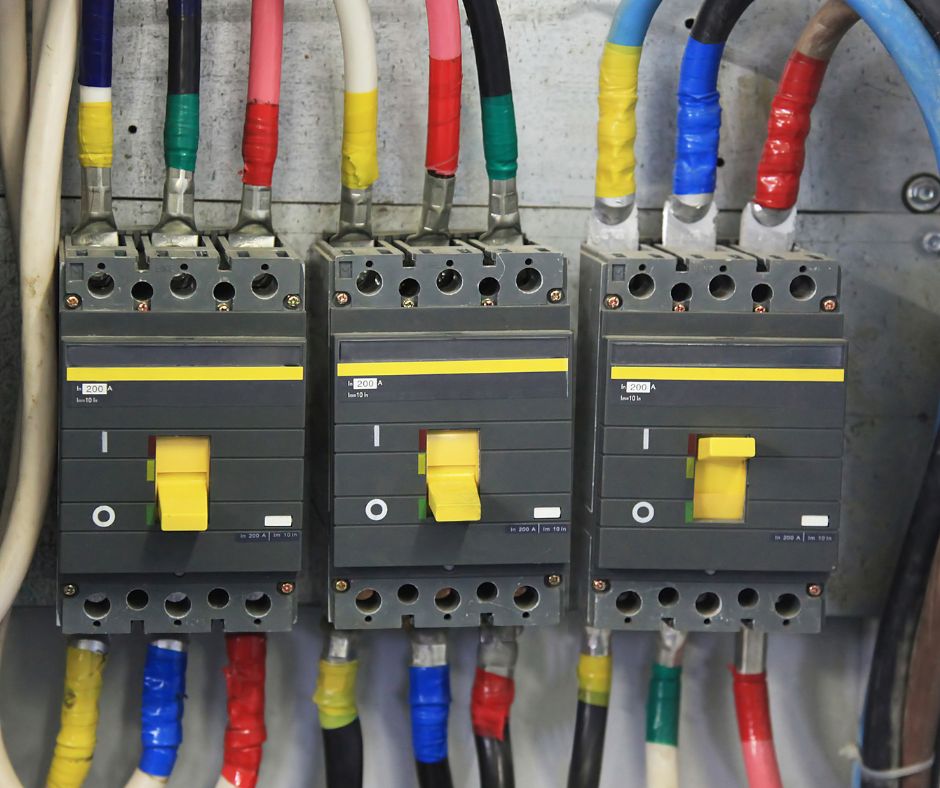The Importance of Electrical Insulation Tape for Ensuring Electrical Safety
Electrical insulation tape is a critical safety component widely used to protect and insulate various kinds of electrical wires and cables. This indispensable tool, often called insulating tape, plays an essential role in preventing electrical shorts and shielding against moisture, dust, and abrasion. By maintaining the integrity of electrical systems, it helps ensure safety in both professional and residential settings. Understanding the significance of this tool can empower you to avoid potential hazards, thereby ensuring a well-organized and efficient working environment.
Electrical insulation tape comes in a wide variety of sizes, lengths, and colors, crafted from materials specifically designed for different applications. This diversity not only enhances insulation effectiveness but also aids in the easy identification and organization of cables through color-coding. By utilizing different colors, you can streamline your electrical work processes, allowing for quick identification of specific wires, which ultimately improves your productivity and keeps your workspace organized.

Critical Conditions Under Which Electrical Tape Can Melt
Indeed, electrical tape can melt under specific high-temperature conditions. This article provides a comprehensive examination of the temperature thresholds associated with electrical tape, detailing the circumstances that may lead to melting and highlighting critical signs of overheating that should be closely monitored. Understanding these factors is vital for ensuring the safe and effective use of electrical insulation tape across various applications.
Understanding Temperature Thresholds for Optimal Electrical Tape Performance
Like many materials, electrical tape possesses distinct temperature limitations that must be recognized for safe and effective usage. Most standard electrical tapes can endure temperatures up to approximately 80°C, but certain heavy-duty variants are engineered to withstand even higher temperatures. When exposed to conditions that exceed these limits, the structural integrity of the tape can begin to deteriorate, potentially leading to failures that compromise safety.
As temperatures escalate toward these limits, the effectiveness of electrical tape diminishes significantly. This degradation can manifest in several ways, including melting, a gooey texture, or, in severe cases, complete failure of the tape. Awareness of these temperature constraints is crucial for maintaining safety and efficiency in electrical applications, ensuring that your projects are executed without unnecessary risks or complications.
For those working in extreme environments, it is prudent to consider high-temperature variants of electrical tape. For example, heat-resistant tape, made from durable materials like fiberglass or silicone, can withstand temperatures of up to 200°C or more, making it an ideal choice for applications exposed to intense heat.
Also Read: Keep Your Pets Safe Around Electricity
Request a Quote Today!
Inquire About Our FREE Electrical Inspections

Key Factors Contributing to the Melting of Electrical Tape
The melting of electrical tape can occur due to several factors, primarily resulting from exposure to extreme heat. Understanding these causes is essential for ensuring safe and efficient usage of electrical tape. Below are several common reasons that contribute to the melting of tape:
The Impact of Excessive Heat Exposure on Electrical Tape Performance
The foremost cause of melting electrical tape is its exposure to high temperatures. If the tape is positioned near hot surfaces, engines, or any heat-generating components, it may begin to soften, bubble, or even melt entirely. Furthermore, electrical systems, such as power circuits, can produce heat levels that exceed the tape's rated capacity, particularly during malfunctions or overload situations.
Consequently, when using electrical tape in environments with high temperatures, it is wise to verify the temperature ratings of the tape to mitigate potential failures and ensure safety.
Environmental Conditions That Degrade Electrical Tape
Electrical tape is not designed to last indefinitely. Over time, both the adhesive and the tape material can degrade, particularly when exposed to UV radiation, moisture, or other harsh environmental conditions. This degradation can significantly impair the insulating capabilities of the tape. As the tape ages, it may lose its effectiveness and become increasingly susceptible to melting, even at temperatures lower than those it would typically withstand.
Regular wear and tear are part of the natural lifecycle of electrical tape. Therefore, it is crucial to routinely inspect the tape for signs of aging or damage to ensure continued safety and optimal performance.
Risks Associated with Improper Application of Electrical Tape
Applying electrical tape under suboptimal conditions can lead to premature failure. For instance, if the tape is wrapped too tightly, exposed to friction or heat, or overstretched during application, its performance may be compromised. Additionally, wrapping the tape around sharp edges or applying it to components that are prone to overheating, such as light bulbs or electrical outlets, can result in issues unless the tape is specifically rated for such applications.
Also Read: 10 Ways to Save On Power And Energy Costs
Identifying Signs That Indicate Electrical Tape is Overheating
If you suspect that your electrical tape may be overheating, there are several key indicators to watch for. Here are the most common signs that your tape might be melting or experiencing excessive heat:
Detecting a Sticky or Tacky Texture in Overheated Tape
A noticeable change in texture, particularly a sticky or tacky feel, is often one of the earliest signs of melting electrical tape. This alteration can serve as an early warning that the tape is degrading, indicating that it may no longer provide adequate insulation.
Observing Discoloration as Evidence of Heat Damage
Overheating electrical tape may show significant discoloration. You might notice a transition from its usual black or colored appearance to shades of brown, dark gray, or even black. This change occurs as heat causes the tape's PVC or other materials to break down. Recognizing this issue early can help prevent further damage to your wires; if neglected, it may lead to melting or even create fire hazards.
Noticing Bubbling or Distortion as Signs of Excessive Heat
If electrical tape begins to bubble, distort, or warp, this indicates that heat is negatively impacting its structure. Such changes typically occur when heat causes the adhesive or plastic layers to separate or degrade. The surface may appear uneven or wavy, signaling that temperatures have surpassed safe levels. Upon observing these bubbles, it is advisable to consult your electrician for a thorough assessment.
Identifying a Burning Smell as a Serious Warning Sign
A burning smell near electrical tape is a critical indicator that should not be ignored. This odor may resemble melting plastic or burning rubber. When excessive heat causes the adhesive to decompose, the resulting fumes can be alarming. Do not overlook this warning. If you detect a burning smell, it may signal the tape is on the verge of melting or even igniting.
Visible Smoke as a Major Red Flag of Danger
If smoke is emanating from the electrical tape, it serves as a clear indication that heat levels have far exceeded what the tape can tolerate. Smoke is a strong signal that the tape has likely begun to melt or may even be igniting. At this critical moment, it is essential to immediately turn off the power source and contact your electrician for assistance.
Remember – Never use water to extinguish an electrical fire. Instead, utilize a CO2 fire extinguisher for safety.
Essential Steps to Take if Electrical Tape Melts: A Comprehensive Safety Guide
If your electrical tape melts, the first step is to disconnect any power sources or turn off any equipment to ensure safety.
Prioritizing safety is paramount, as electrical hazards can pose serious risks to both life and property.
After securing the area, always seek the expertise of your electrician for professional guidance. If a qualified person installed the tape, they may need to assess the area for any underlying electrical issues that could have contributed to the problem, ensuring comprehensive safety and functionality for your system.
Exploring Alternatives to Electrical Tape for High-Temperature Scenarios
<pIf you frequently operate in environments where temperatures surpass the limits of standard electrical tape, it is wise to consult your electrician about suitable alternatives. Here are several options worth considering:
- Heat-resistant silicone tape: This tape is specifically engineered to endure elevated temperatures, making it ideal for applications where heat is a significant concern.
- Fiberglass tape: A durable option that can withstand extreme temperatures without compromising performance or safety.
- Mica or ceramic insulation: For maximum heat protection, specialized insulations like mica or ceramic are excellent choices.
Crucial Insights on the Risks of Melting Electrical Tape and How to Prevent It
In summary, electrical tape can indeed melt, primarily due to excessive heat exposure. Recognizing the temperature limits of your tape and choosing the appropriate type for your specific application are essential steps in preventing potential issues.
By being vigilant about signs such as discoloration, stickiness, or unusual smells, you can take prompt action to mitigate risks. Always prioritize safety and do not hesitate to reach out to your local electrician for expert advice whenever necessary.
Request a Quote Today!
Inquire About Our FREE Electrical Inspections

The Article: Does Electrical Tape Melt? Here’s What You Need to Know first appeared on https://writebuff.com
The Article Electrical Tape Melting: Essential Facts You Should Know Was Found On https://limitsofstrategy.com

